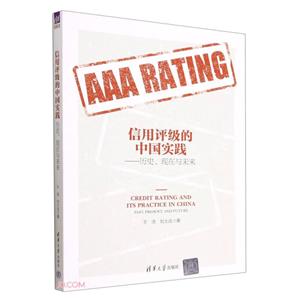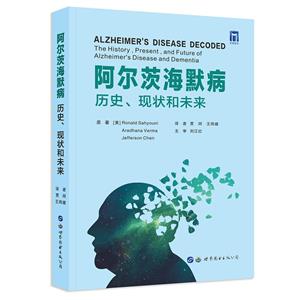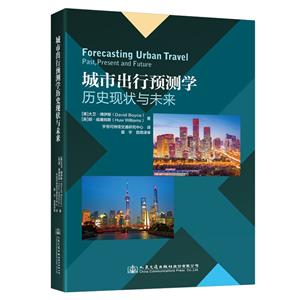
作者:沈远东 主编
页数:500
出版社:上海科学技术出版社
出版日期:2022
ISBN:9787547858394
电子书格式:pdf/epub/txt
内容简介
《世界传统医学历史、现状及未来》一书主要是针对世界主要传统医学流派及疗法发展的历史、现状和未来进行归纳与总结,旨在加强世界各国和各民族传统医学之间的交流,创造相互学习的平台,并促进各传统医学流派之间和有关政府管理部门的合作。本书将分为三个章节,第一章主要针对目前世界主要传统医学流派的起源和贡献、发展现状、模式与评价等方面,以一个广阔的视角呈现目前世界传统医学的组成、规模及发展现状,谱绘世界传统医学板块组成及组成蓝图。第二章节主要是对世界主流传统医学如中医学、韩医学、汉方医学、阿育吠陀等10个主流传统医学的历史、现状和未来进行详细描述,凸显各传统医学流派的自身特点、追寻其发展轨迹、比较和勾勒未来
作者简介
沈远东,教授、研究员,硕士生导师,历任上海中医药大学附属曙光医院院长、上海市卫生局副局长、上海市中医药发展办公室主任。现任国际标准化组织/中医药技术委员会(ISO/TC249)主席,上海中医药大学中医药国际标准化研究所所长、上海市中医师协会会长、上海市标准化技术委员会会长。在中医药国际化和国际标准化研究领域有着丰富的经验,担任世界卫生组织传统医学顾问,负责国际疾病分类代码项目(WHO ICD11-ICTM)中国专家组的工作。
本书特色
适读人群 :从事传统医学研究人士本书介绍了世界主要传统医学的历史与现状。
目录
History, Present and Prospect of Ayurveda – 001
1.1 History of Ayurveda – 003
1.1.1 Vedic Period – 003
1.1.2 Upanishadic Literature – 008
1.1.3 Purana Literature – 009
1.1.4 Buddhist Literature – 009
1.1.5 Samhita Period – 010
1.1.6 Medieval Period and Colonial Rule – 014
1.2 Basic Concepts in Ayurveda – 015
1.2.1 Panchamahabhutas (Five Elements) – 016
1.2.2 Doshas (Biologicial Energies) – 016
1.2.3 Prakriti (Constitution) – 019
1.2.4 Dhatus (Tissues) – 020
1.2.5 Ojas (Essence of Dhatu) – 022
1.2.6 Malas (Waste Products) – 023
1.2.7 Agni (Transinformatory Energy) – 023
1.2.8 Ama (Undigested Metabolities) – 024
1.2.9 Srotas (Circulatory Channels) – 024
1.2.10 Manas (Mind) – 025
1.2.11 Ayurvedic Treatment Approaches – 026
1.2.12 Traya Upastamaba (Three Supportive Pillars) – 027
1.2.13 Swasthavrtta (Healthy Lifestyle Practice) – 029
1.3 Present Status of Ayurveda in India – 030
1.3.1 Present Status of Ayurveda in India – 030
1.3.2 Present Status of Ayurveda Outside India – 042
1.4 Ayurveda in Future – 045
References – 046
2
History, Present and Prospect of Chiropractic – 048
2.1 The History of Chiropractic (1880s through 1990s) – 049
2.1.1 Antecedents to Chiropractic – 049
2.1.2 Origins of Chiropractic – 051
2.1.3 Clinical Elements of Practice – 052
2.1.4 Training – 052
2.1.5 Licensure – 052
2.1.6 Scope and Practice – 053
2.1.7 Research, Journals, and Scientific Conferences – 053
2.2 The Chiropractic Profession Today
(2000 to the Present) – 055
2.2.1 Training – 056
2.2.2 Licensure – 058
2.2.3 Scope and Practice – 059
2.2.4 Spinal Adjustments as the Common Thread – 059
2.2.5 Specialties – 060
2.2.6 Diagnostic Imaging – 060
2.2.7 Athletic and Sports-Related Care – 060
2.2.8 Economic Considerations – 061
2.2.9 Reimbursement – 062
2.2.10 Emerging Models of Practice – 064
2.2.11 Public Perception – 066
2.2.12 Research, Journals, and Scientific Conferences – 067
2.2.13 The World View – 067
2.3 Potential Futures for the Chiropractic Profession – 067
2.3.1 Introduction – 067
2.3.2 Healthcare Landscape and Trends – 069
2.3.3 The Internet of Things (IOT) – 071
2.3.4 Training, Licensing, Scope of Practice and Regulations – 073
2.3.5 Market for Chiropractic Services and the Practice of
Chiropractic – 077
2.3.6 Integration – 078
2.3.7 Competition from Other Provider Types – 078
2.3.8 Chiropractic Research – 079
2.3.9 Public Perception of the Chiropractic Profession – 080
References – 081
History and Present of European Traditional Herbal
Medicine (Phytotherapie) – 085
3
3.1 Main Concepts – 086
3.1.1 Phytotherapy and Mainstream Medicine – 087
3.1.2 Effect and Efficacy – 087
3.1.3 Finding and Feeling – 087
3.2 The History of European Traditional Herbal Medicine
(European Phytotherapy) – 089
3.3 Traditional European Herbal Medicine in the Health
System – 098
3.3.1 Phytotherapeutic Products in Germany and Europe in the
Last 100 Years – 098
3.3.2 Policies and Regulations Specific to this Traditional Medicine – 102
3.3.3 Clinical Management – 109
3.3.4 Standardization – 110
3.3.5 Education and Training – 113
3.3.6 Organizations in the Field of European Phytopharmaceuticals – 118
3.3.7 Scientific Research and Evaluation for Efficacy, Quality
and Safety – 118
3.3.8 Products and Trading – 128
3.3.9 Dosage Forms of Herbal Medicinal Products – 131
3.3.10 Overseas Communication – 133
3.3.11 Current Challenges: Synergism the New Concept? – 134
3.3.12 Cultivation and Origin of Medicinal Drugs – 135
Appendix
Short Overview of Typical Phytochemical Applications – 139
References – 157
History, Present and Prospect of Greco-Arab and
Islamic Herbal Medicine – 158
4
4.1 A Brief History of Arab Medicine – 160
4.1.1 Early Arab and Islamic Medicine – 160
4.1.2 Greco-Arab and Islamic Medicine – 162
4.1.3 Prominent Arab and Muslim Physicians – 163
4.1.4 Rhazes (Al-Razi, 864–930 AD) – 164
4.1.5 Avicenna (Ibn Sina, 980–1037 AD) – 165
4.1.6 Alhacen (Ibn al-Haitham, 965–1040 AD) – 167
4.1.7 Ibn al-Nafis (1213–1288 AD) – 167
4.1.8 Abulcasis (Al-Zahrawi, 936–1013 AD) – 168
4.1.9 Alkindus (Al-Kindi, 800–873 AD) – 169
4.1.10 Avenzoar (Ibn Zuhr 1091–1162 AD) – 169
4.1.11 The Role of Arabs and Muslims in the Development of
Pharmacology – 169
4.1.12 Poisons and their Antidotes in Greco-Arab and Islamic Herbal
Medicine – 171
4.1.13 Hospitals in the Greco-Arab and Islamic Herbal Medicine – 171
4.1.14 Current Status of Greco-Arab and Islamic Herbal Medicine – 173
4.2 Commonly Used Medicinal Plants in the Mediterranean – 177
4.3 Medicinal Plants Used in the Treatment of Diabetes,
Obesity, Cardiovascular Diseases – 181
4.3.1 Olea Europaea (Olive Tree) – 182
4.3.2 Punica Granatum (The Pomegranate) – 187
4.3.3 Black Seeds (Nigella Sativa) – 190
4.3.4 Curcuma Longa Rhizomes (Turmeric) – 192
4.3.5 Cumin (Cuminum Cyminum L.) – 194
4.4 Prospect of Greco-Arab and Islamic Herbal Medicine – 195
References – 199
5
History, Present and Prospect of Homeopathy – 203
5.1 History and Philosophy of Homeopathy – 204
5.1.1 Definition of Homeopathy – 204
5.1.2 Origin of Homeopathy – 204
5.1.3 Basic Principles – 206
5.1.4 Specific Concept of Health and Disease – 210
5.2 Current Status of Homeopathy – 214
5.2.1 Overview of National Health Service System and Integration
of Homeopathy into National Health System – 214
5.2.2 Policies and Regulations Specific to Homeopathic Practice – 217
5.2.3 Regulation of Homeopathic Medicinal Products (HMP) – 221
5.2.4 Clinical Management – 234
5.2.5 Standardization – 239
5.2.6 Education and Training – 241
5.2.7 Scientific Research and Evaluation for Efficacy, Quality, and
Safety (If Available) – 244
5.2.8 Homeopathic Medicines – 252
5.2.9 Trading – 252
5.2.10 Overseas Communication – 253
5.3 Prospect of Homeopathy – 253
5.3.1 The Need for Water Research – 253
5.3.2 The Need for Good Research Strategy – 254
5.3.3 The Need for Targeted Research into Specific Medical
Conditions – 254
5.3.4 The Need for International Awareness of National Policies
Which are T&CM-Unfriendly – 255
5.3.5 The Possibility of Supra-National Collaboration – 257
References – 257
6
History, Present and Prospect of Kampo Medicine – 260
6.1 History of Kampo Medicine – 261
6.1.1 Ancient Era – 261
6.1.2 Medieval Age – 262
6.1.3 Meiji Restoration – 269
6.1.4 After the World War II – 273
6.2 Current Status of Kampo Medicine – 280
6.2.1 National Healthcare System and Integration of Traditional
Medicine into National Healthcare – 280
6.2.2 Insurance Coverage of Kampo Medicine/Acupuncture &
Moxibustion – 280
6.2.3 Licensure System, Training and Education – 281
6.2.4 Trade and Product – 282
6.2.5 Academic Societies and Research Centers for Kampo
Medicine – 283
6.2.6 Overseas Communication: Academic Symposium and
Conference – 286
6.2.7 Japan’s Contribution to International Standardization of
Traditional Medicine – 288
6.3 Challenges and Prospect of Kampo Medicine – 290
References – 291
7
History, Present and Prospect of Korean Medicine – 293
7.1 History of Korean Medicine – 296
7.1.1 Ancient Times to Unified Silla Era – 296
7.1.2 Goryeo Dynasty – 296
7.1.3 Early and Mid-Joseon Dynasty Period – 297
7.1.4 Late Joseon Dynasty to Japanese Colonial Period – 299
7.1.5 1945 to Present – 300
7.2 Components of Korean Medicine – 302
7.2.1 Acupuncture Therapy – 302
7.2.2 Moxibustion – 305
7.2.3 Cupping – 305
7.2.4 Herbal Medicine Therapy – 306
7.2.5 Herbal Acupuncture Therapy (Pharmacopuncture) – 306
7.2.6 Chuna Manual Therapy – 307
7.2.7 Sasang Constitutional Medicine – 307
7.3 Legal Status and Administration of Korean Medicine – 310
7.3.1 Overview of Health Care System in Korea – 310
7.3.2 Legal Status and Administrational Body for Korean Medicine – 312
7.3.3 National Development Plans for Korean Medicine – 313
7.3.4 Policies on Korean Medicine Services – 314
7.3.5 Policies and Regulations on Herbal Medicines – 321
7.4 Resources and Utilization of Korean Medicine – 324
7.4.1 Human Resources – 324
7.4.2 Hospitals, Clinics, and Pharmacies, etc. – 325
7.4.3 Usage of the Korean Medicine Services – 327
7.5 Education in Korean Medicine – 329
7.5.1 Overview – 329
7.5.2 Education System for Korean Medicine Doctor – 331
7.5.3 Education System for Herbal Pharmacist – 333
7.5.4 Clinical Specialist Education – 333
7.5.5 Continuing Medical Education in Korean Medicine – 334
7.5.6 Accreditation and Evaluation of Education for Korean
Medicine Institutions – 334
7.6 Korean Medicine in Health Security System – 336
7.6.1 National Health Insurance and Korean Medicine – 336
7.6.2 Other Medical Guarantees and Korean Medicine – 339
7.6.3 Patient Classification System in Korean Medicine – 340
7.7 Industry and R&D of Korean Medicine – 341
7.7.1 Overview – 341
7.7.2 Korean Medicine Industry – 342
7.7.3 Research & Development of Korean Medicine – 344
7.8 Future Directions for Korean Medicine – 348
7.8.1 Improving Reliability of Korean Medicine through Scientific
Evidence Accumulation – 348
7.8.2 Innovating Korean Medicine Education – 349
7.8.3 Expanding Health Insurance Coverage for Korean Medicine – 349
7.8.4 Enhancing the Korean Medicine-Western Medicine Co-practice – 350
7.8.5 Promoting Korean Medicine Industry and R&D – 350
References – 351
Appendix
Act on the Promotion of Korean Medicine and Pharmaceuticals
(Act No. 15910) – 352
History, Present and Prospect of Traditional Chinese
Medicine – 356
8
8.1 The Sprouting, Formation and Development – 357
8.1.1 The Origin of Traditional Chinese Medicine – 357
8.1.2 TCM in the Pre-Qin and Han Dynasties (221 BCE–220 CE) – 360
8.1.3 TCM in the Wei, Jin, Southern & Northern, Sui, Tang and Five
Dynasties (220–960) – 362
8.1.4 The Song, Jin and Yuan Dynasties (960–1368) – 364
8.1.5 TCM in the Ming and Qing Dynasties (1368–1912) – 369
8.1.6 TCM in Modern Times – 373
8.2 The Fundamentals and Concepts of TCM – 379
8.2.1 Yin-Yang Theory – 380
8.2.2 The Five-Element Theory – 381
8.2.3 The Zang-Fu Theory – 381
8.2.4 Qi, Blood and Body Fluids – 383
8.2.5 Meridians – 386
8.2.6 Characteristics and Practice of TCM Clinical Thinking – 387
8.3 TCM Healthcare Skills and Practices – 388
8.3.1 Acupuncture Therapy – 388
8.3.2 Tuina – 391
8.3.3 Qigong and Daoyin – 392
8.3.4 Cupping Therapy – 394
8.3.5 Chinese Herbal Medicine – 395
8.3.6 Health Preservation – 398
8.4 Current Status of TCM – 401
8.4.1 Policies and Measures on TCM Development – 401
8.4.2 Regulations on TCM Service – 402
8.4.3 TCM Service – 404
8.4.4 Education and Training for TCM Professionals – 406
8.4.5 TCM Research and Innovation – 407
8.4.6 TCM Pharmaceutical Industry – 409
8.4.7 TCM Standardization and Cultural Development – 410
8.4.8 International Exchange and Cooperation in TCM – 411
8.5 Future Directions for TCM – 412
8.5.1 Improving TCM Service System – 412
8.5.2 Giving Play to the Unique Role of TCM in Maintaining and
Promoting People’s Health – 412
8.5.3 Promoting TCM Quality Enhancement and High-Quality TCM
Industry Development – 413
8.5.4 Strengthening the Building of TCM Professionals – 413
8.5.5 Facilitating the TCM Inheritance, Openness and Innovative
Development – 413
8.5.6 Reforming and Improving the TCM Management System and
Mechanism – 413
Reference – 413
Appendix I
Traditional Chinese Medicine in China – 415
Appendix II
Law of the People’s Republic of China on Traditional Chinese
Medicine – 421
Appendix III
Traditional Chinese Medicine Treatment COVID-19 Diagnosis and
Treatment Protocol (the 9th Edition) – 427
Appendix IV
WHO Expert Meeting on Evaluation of Traditional Chinese Medicine
in the Treatment of COVID-19 – 431
History, Present and Prospect of Thai Traditional
Medicine – 439
9
9.1 The Principles of Thai Traditional Medicine – 440
9.1.1 The Four Elements (Dhatu) of the Body and the Causes of
Illnesses – 440
9.1.2 Examination and Diagnostic Procedures of TTM – 441
9.1.3 Treatment Modalities in TTM – 441
9.2 History of Thai Traditional Medicine – 444
9.2.1 History of the Development of Thai Traditional Medicine – 444
9.2.2 The Revival of Thai Traditional Medicine – 445
9.2.3 Milestone of Major Events, Changes and Achievements in
TTM after the Establishment of DTAM – 449
9.3 Current Situations and Status of Thai Traditional Medicine
(2020–2021) – 453
9.3.1 Current Situation of the 4P of TTM – 454
9.3.2 The Current Situation of Ongoing Agenda-Driven Projects
on TTM Based on the Government Policies and the National
Strategy (2020–2021) – 464
9.4 Future Development of Thai Traditional Medicine – 471
9.4.1 TTM Practice and Provision of TTM Service – 471
9.4.2 TTM Practitioners and TTM Educational System – 471
9.4.3 TTM Products and Herbal Products for Economy – 471
9.4.4 Protection and Promotion of Thai Traditional Medicine
Knowledge – 472
9.4.5 Medical Cannabis Service – 472
References – 472














